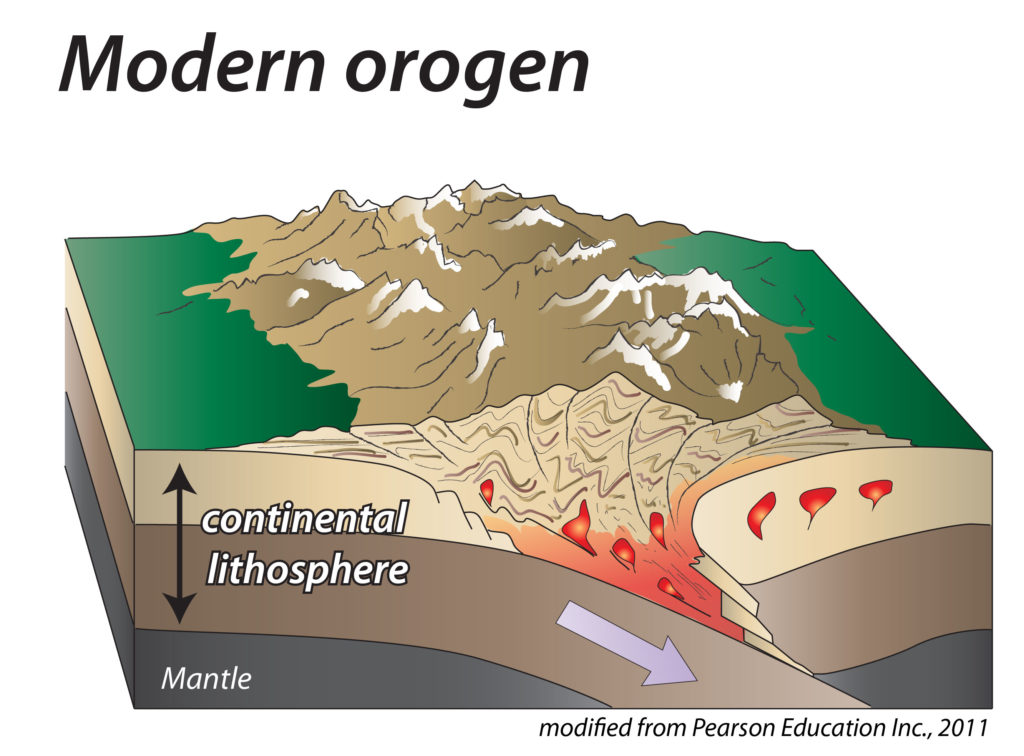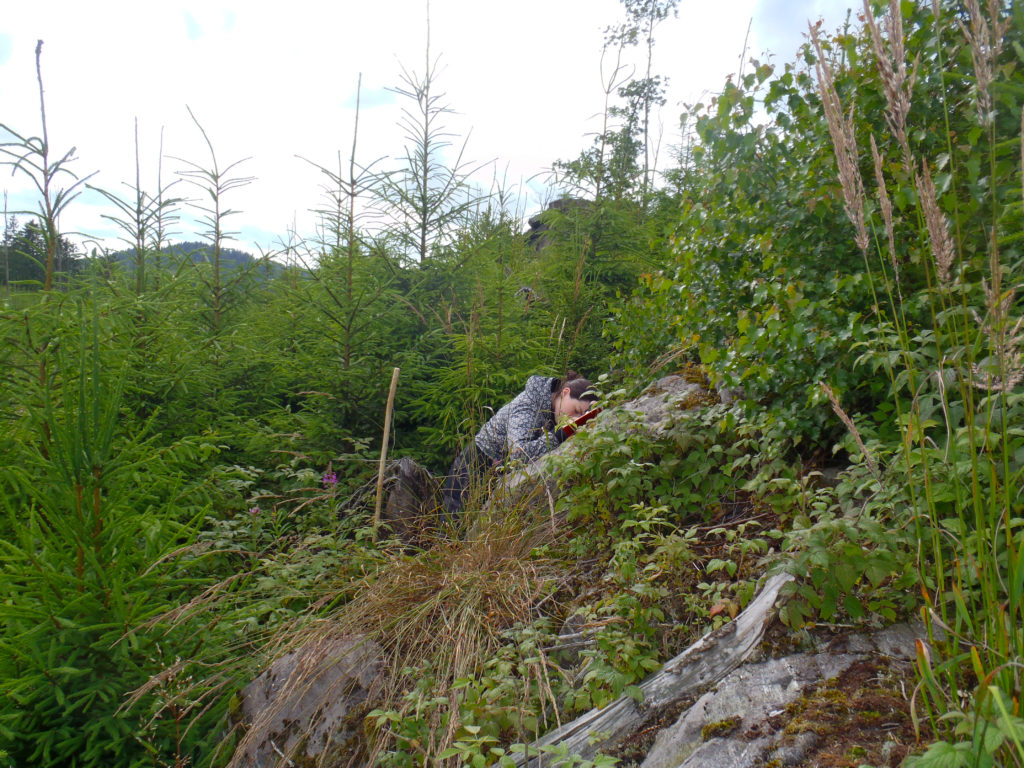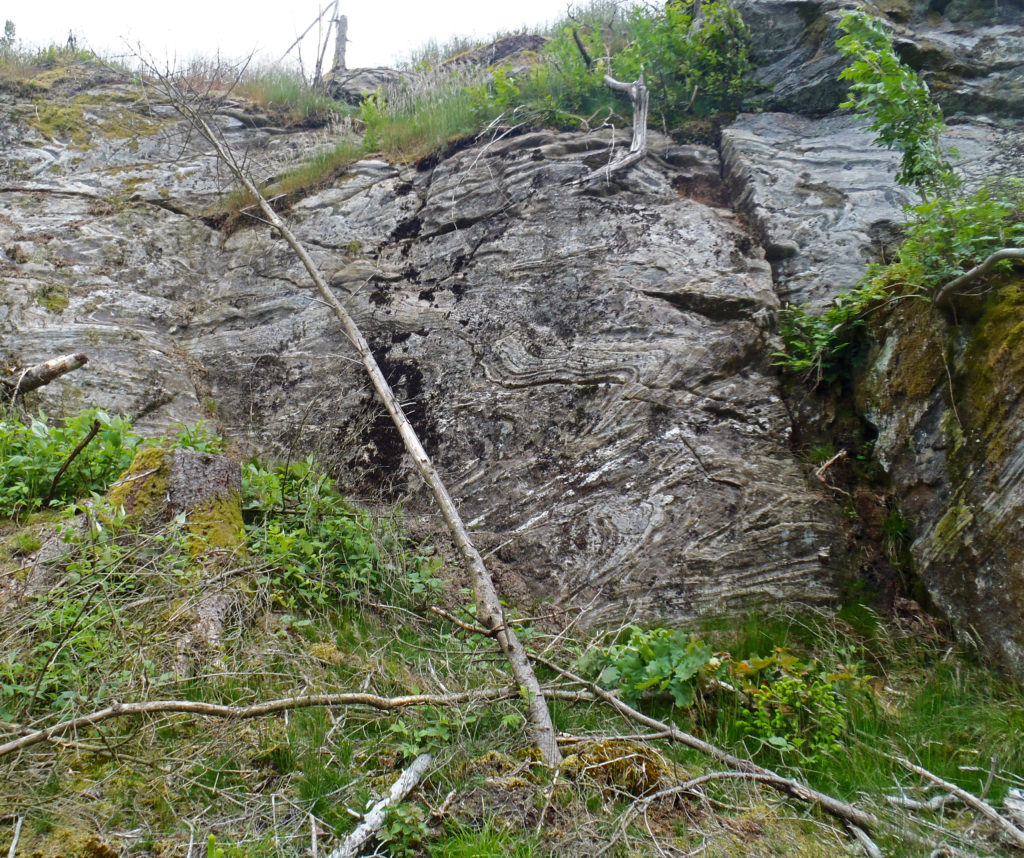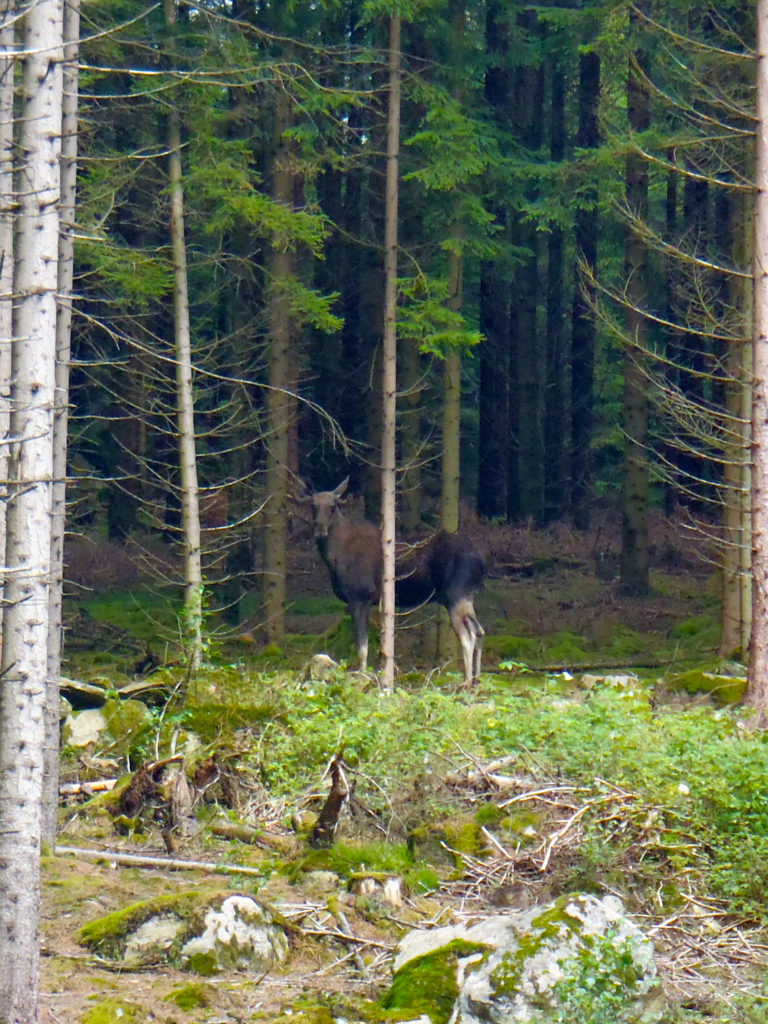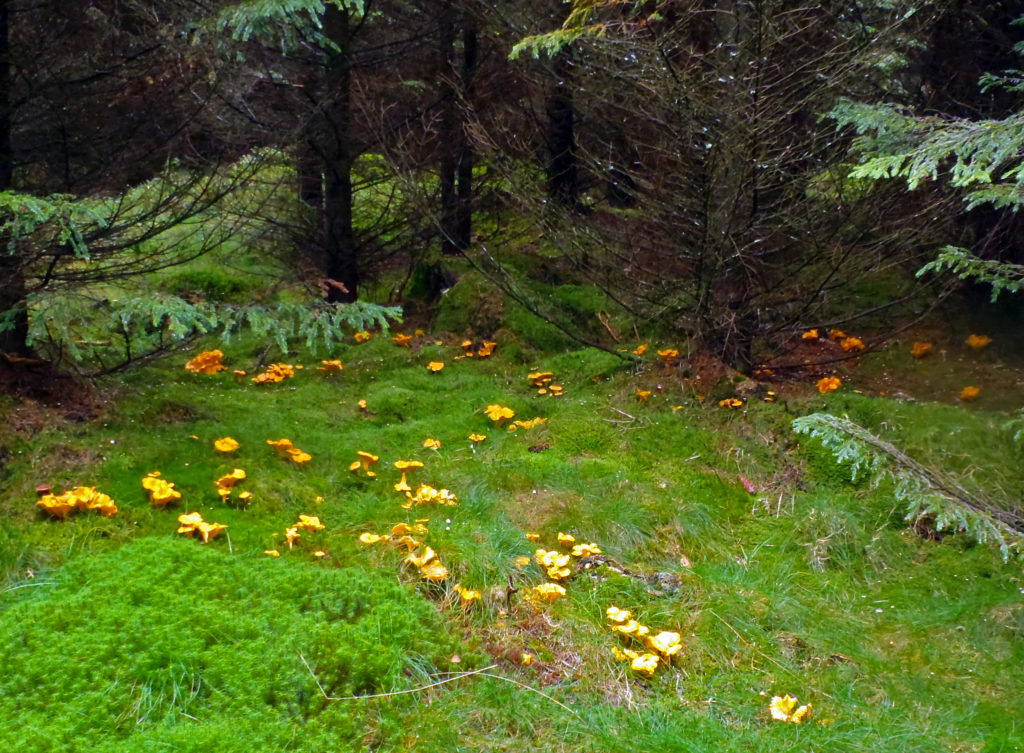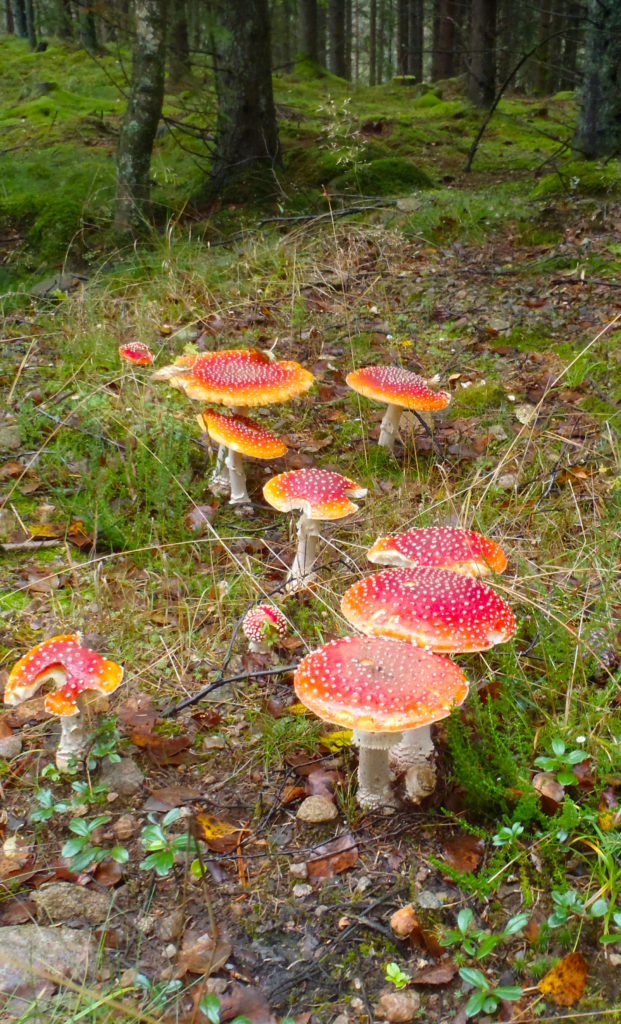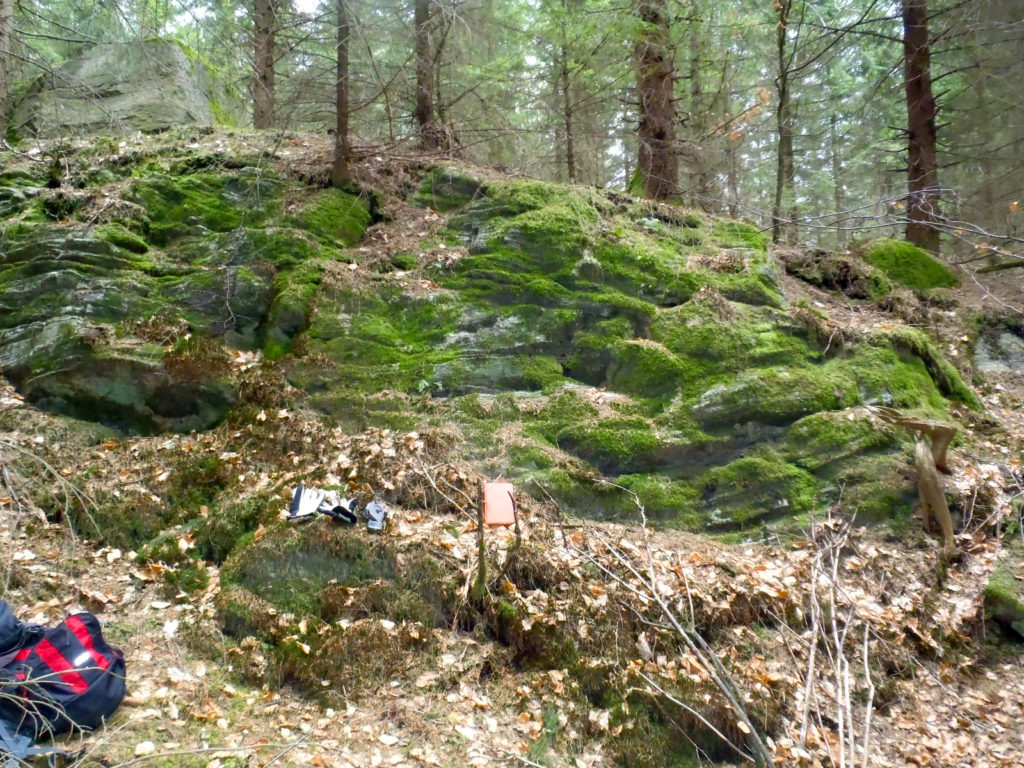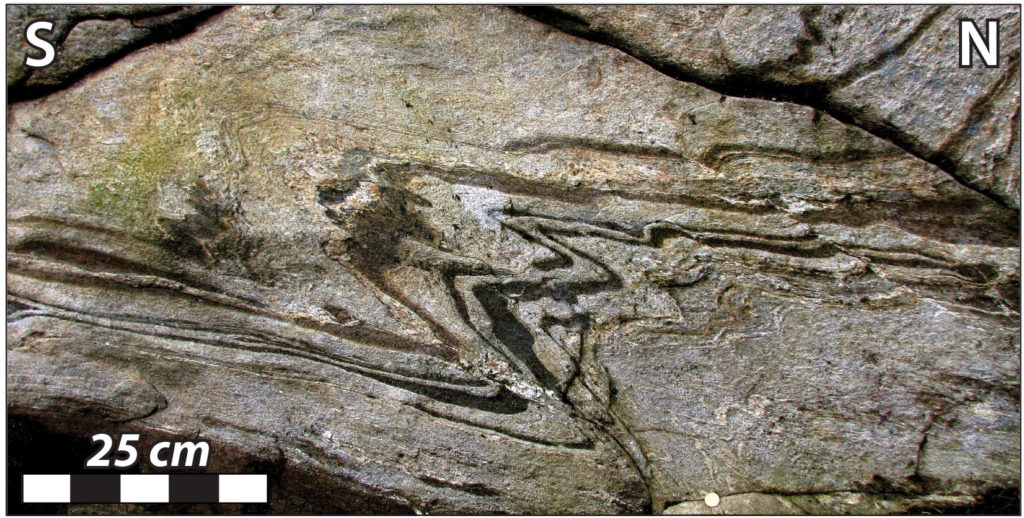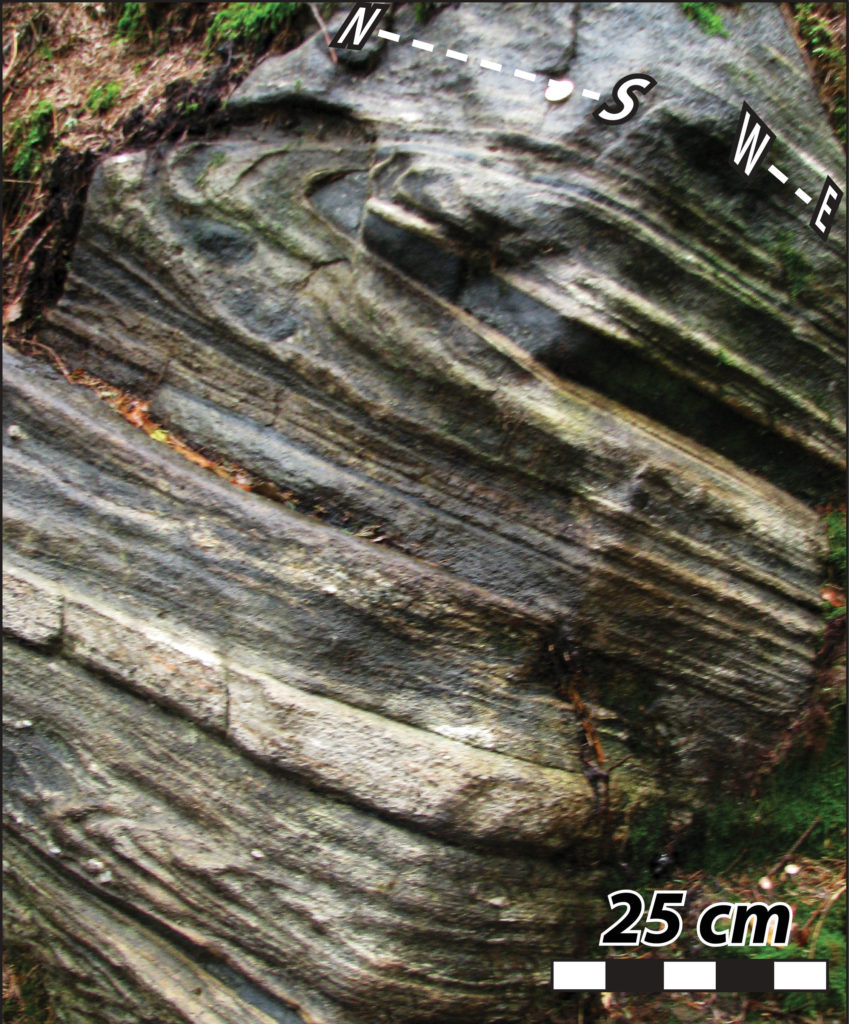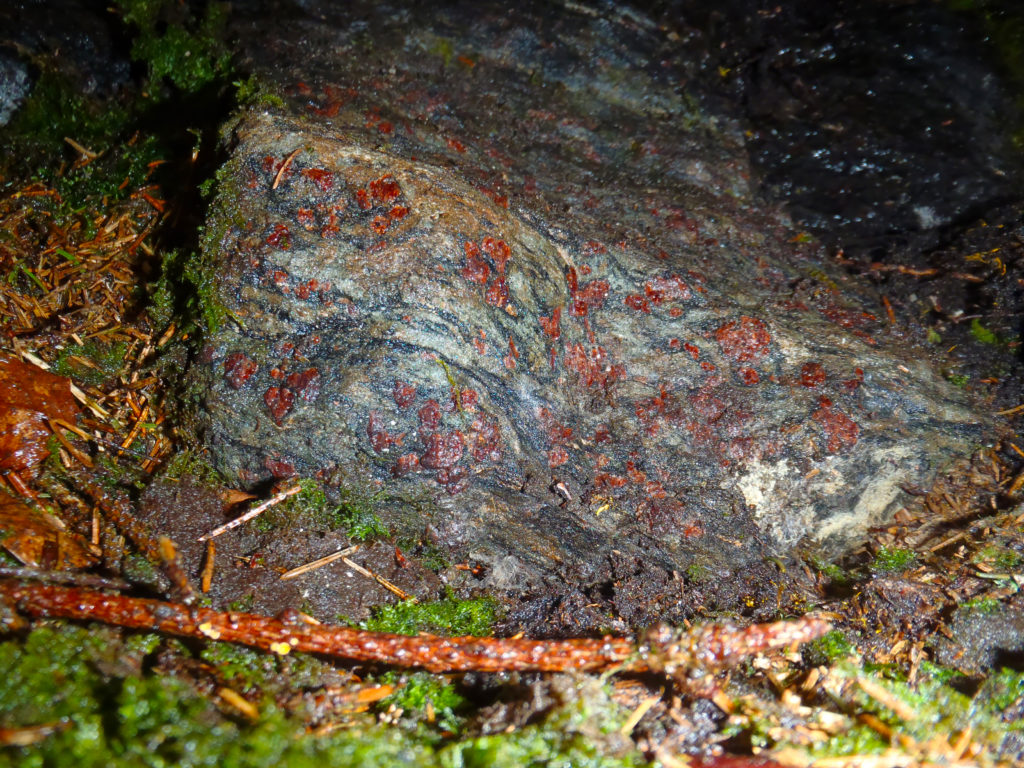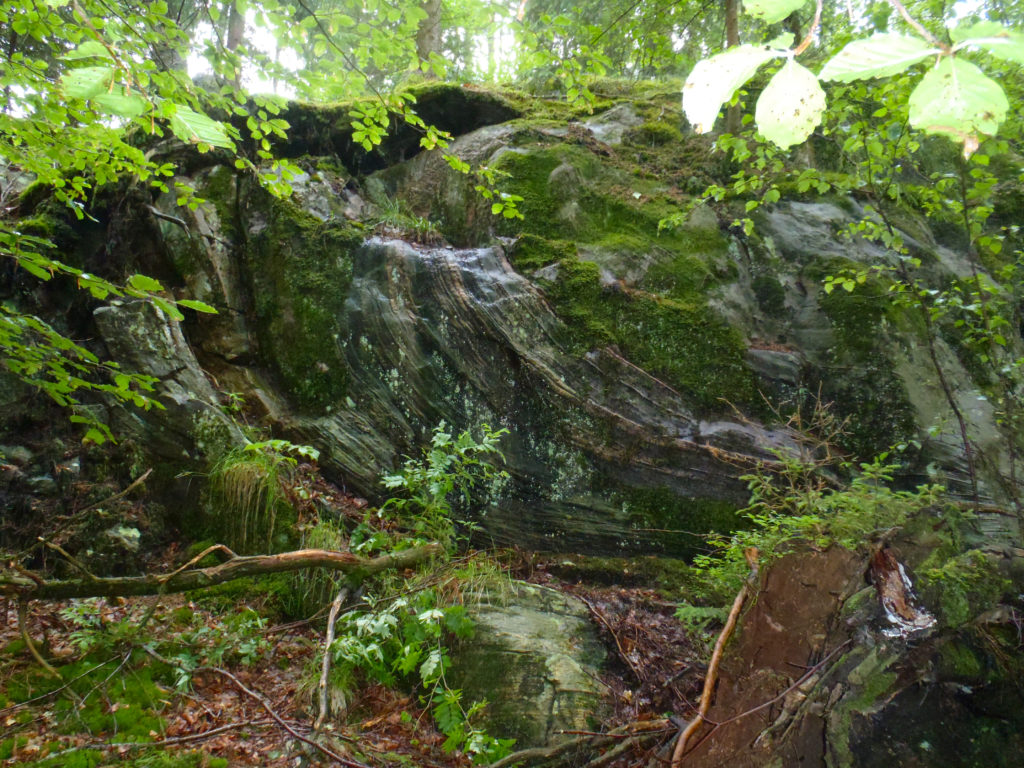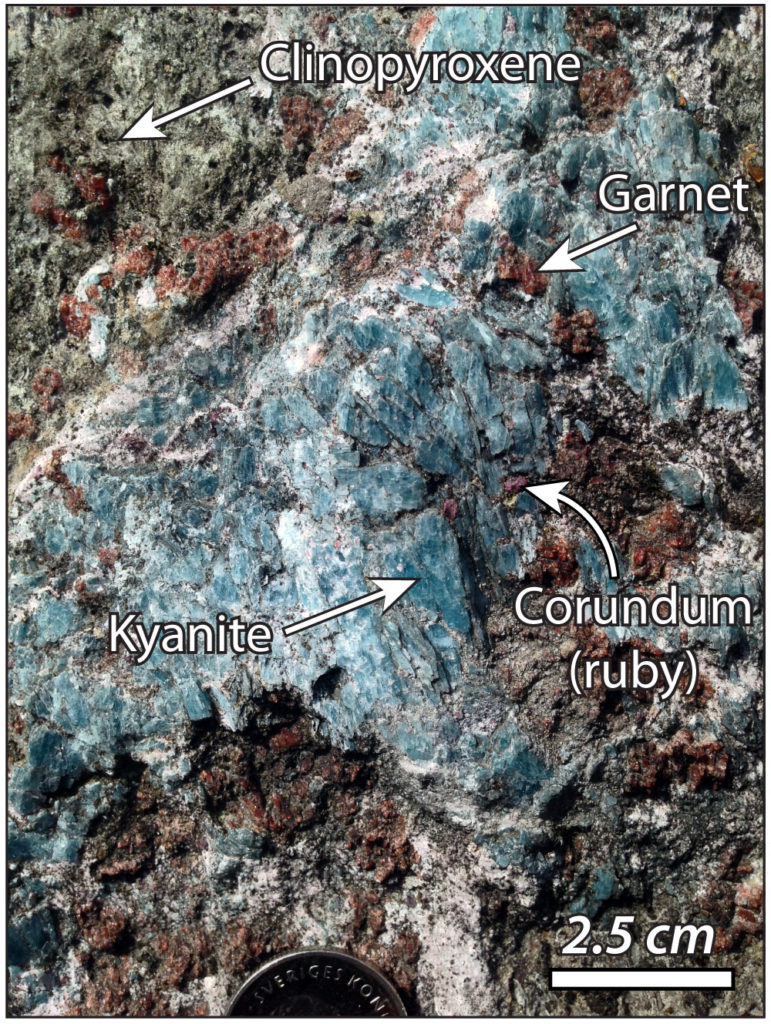Lorraine is a postdoctoral researcher at the Swedish Museum of Natural History in Stockholm. She completed a PhD at Lund University, Sweden and a MSc at Rennes 1 University, France. She has a general fascination for mountains, enjoys fieldwork and is thrilled by the sight of high-pressure rocks.
The first time I landed on Swedish bedrock was just a few days after I actually landed for the first time in Sweden. I had just completed a BSc – MSc project on beautiful, ostentatious blueschist outcrops in Greece. In comparison, the soupy, partially molten, complexly folded grey gneisses, hidden in the forest, seemed properly scary at first. My mission as a PhD student was to find out the history of pretty uncommon rocks that managed to remain incognito among these gneisses until they were recently described (Möller, 1998). These rocks, called eclogites, are the witnesses of the making of mountains, the Sveconorwegian orogen, which formed one billion years ago and resulted in a gorgeous succession of outcrops across the now peaceful, smooth and low- lying southern Scandinavia. Eclogites are particularly significant; they represent the deepest section of this Precambrian mountain belt exposed within the Fennoscandian Shield that, in a global framework, was a major part of the Rodinia supercontinent. For my PhD, I was interested in sorting out the sequence of tectonic events (how and why rocks got deformed) and the metamorphic evolution (how deep and how hot the conditions were) in these Sveconorwegian remnants.
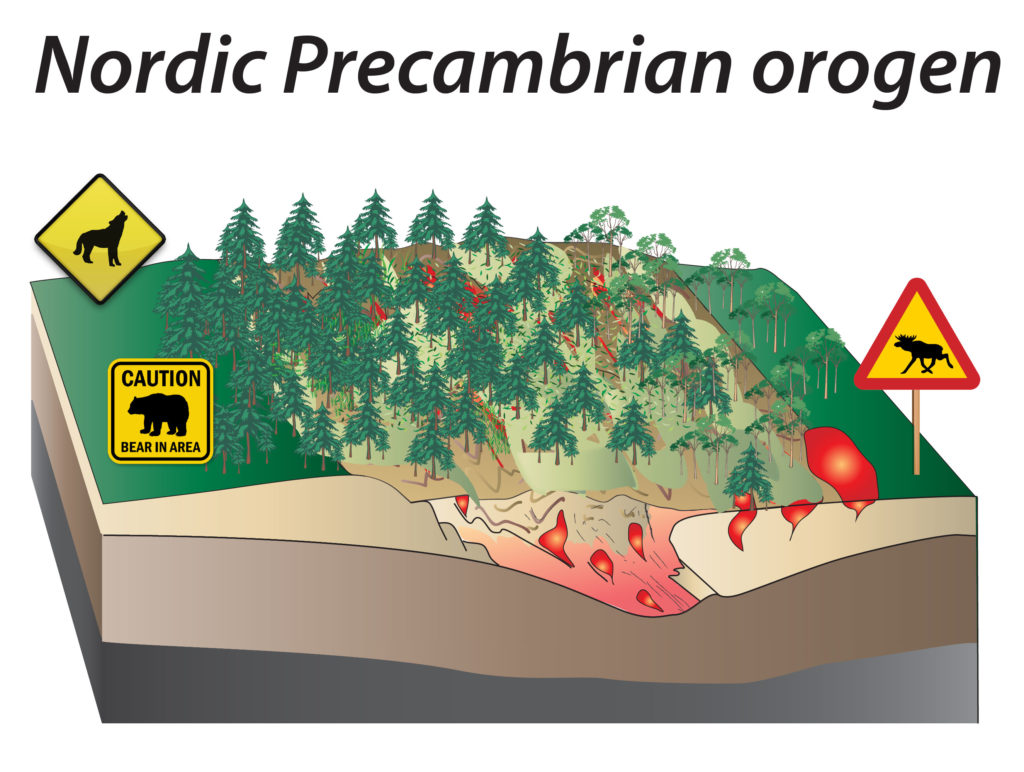
Modern vs -nordic- Precambrian orogen. Most Precambrian orogens are deeply eroded, forming dismembered pieces on Earth, but represent a unique chance to visualize the heart of a mountain, unreachable in most Phanerozoic orogens. It is like lifting the lid of a mountain!
I spent more than a dozen weeks in the field doing detailed mapping during the first two summer seasons of my PhD. I focused along a strongly deformed area that represents the basal shear zone of the high-pressure nappe. In this highly deformed zone, exhumation-related folds are ubiquitous and the first goal was to better understand by which mechanisms they were transformed. My daily routine was to locate outcrops in the woods (which was sometimes tricky as we can see on the next picture) without getting too distracted by the fascinating fauna or delightful, oversized mushrooms (pictures below).
When I was lucky enough to find a large outcrop with folds or good-looking rocks, a big part of the job was to sit down, draw and try to understand what had happened to cause these localized snapshots of rock-soup.
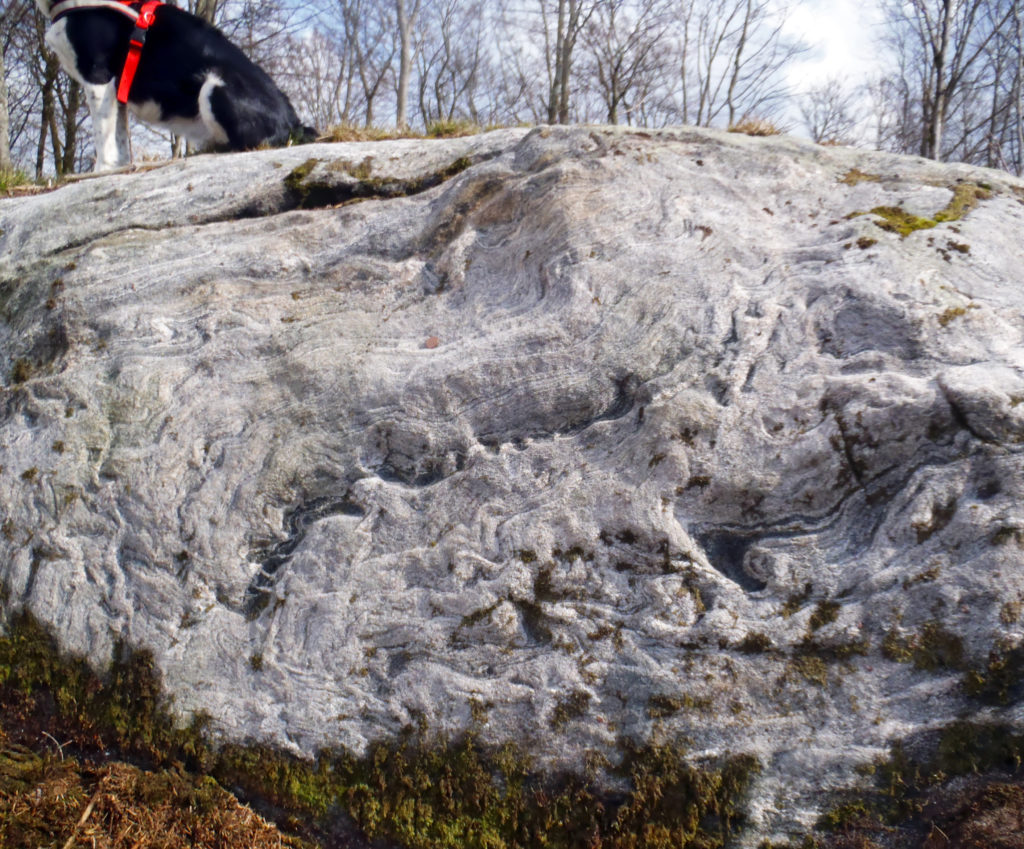
At first, I would call these outcrops “rock-soup snapshots”, but this one ended up being one of my favorites! Strimma, my PhD supervisor’s dog, for scale.
The local mega-fauna is shy, but you may be watched discreetly by a few moose and I later realized that no one could actually promise that wolves wouldn’t occasionally passively walk by. Anyway, your worst enemy is, by far, nasty-diseases-bearing-ticks who hang out pretty much everywhere so you have to watch out. I figured out relatively late that just sealing yourself with your socks on top of your trousers and your gloves wrapping the sleeves of your rain jacket is a simple, yet effective way to go.
Yes, I said, “gloves” and “summer season” earlier. You may wear gloves either from the recalcitrant cold weather in May or for moss gardening purposes because most outcrops are covered with a thick layer of moss that you’ll have to gently peel off the outcrop (picture on the right). Sometimes, hours had to be dedicated to cleaning a new outcrop, although we try to limit our footprint on nature. Cleaning, therefore, has to be strategic, and unlike wild boar, we put back all the moss peels where they come from!
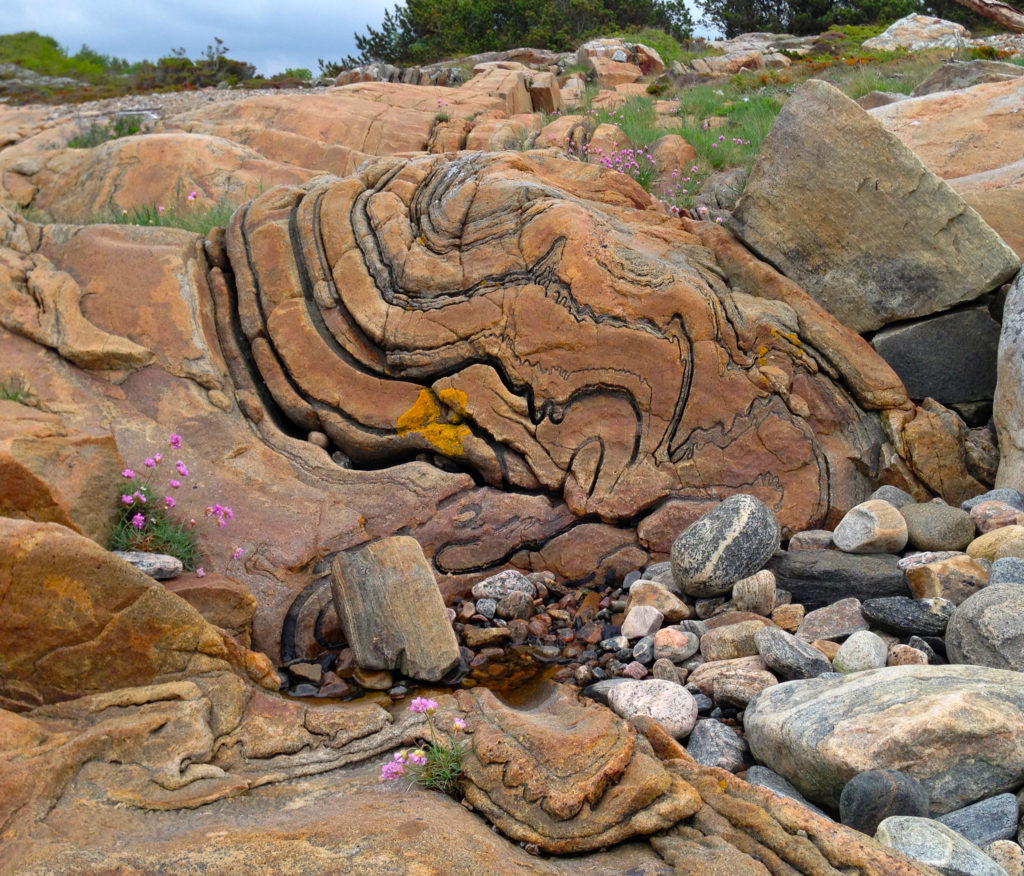
Examples of typical folds in SW Sweden – just a good looking one 30km west of the study area -bottom right-).
Systematic mapping of small-scale structures is necessary for reconstruction of large-scale ones because they often are identical in style. Planar and linear deformation structures in shear zones can help to figure out the ratio of flattening versus elongation. The geometries and orientations of folds also carry information about kinematics and deformation. In the region, there are 4 main groups of folds, and they can be quite spectacular. At high temperatures, rocks will start to melt in proportions that are largely dependent on the rock’s composition and water content. The interplay between folding, shearing and partial melting lead to the formation of very tight folds, melt expulsion through fold hinges and extreme stretching (examples on the pictures above).
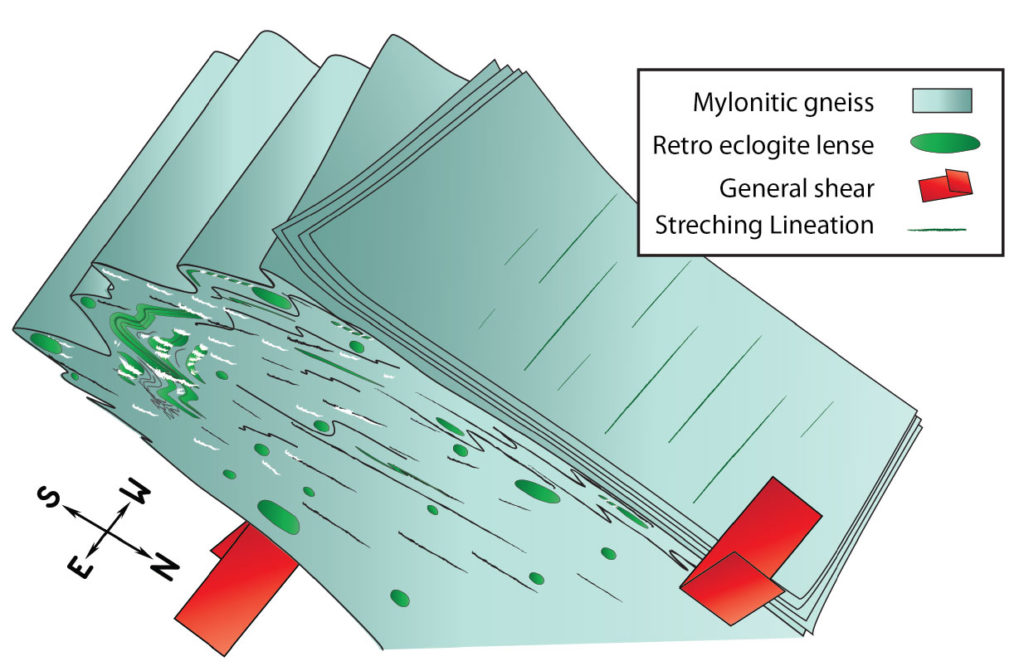
This sketch compiles the main features of the major folding event, with melt gathering expulsed where it could and the extreme east-west stretching. We interpret this fold as formed by intense general shear, with the folds that develop parallel to the main transport direction, because the whole domain was “flowing” and squeezed up towards shallower levels. It is only flowing on a geological time-scale though, in a similar way as hard glaciers are flowing.
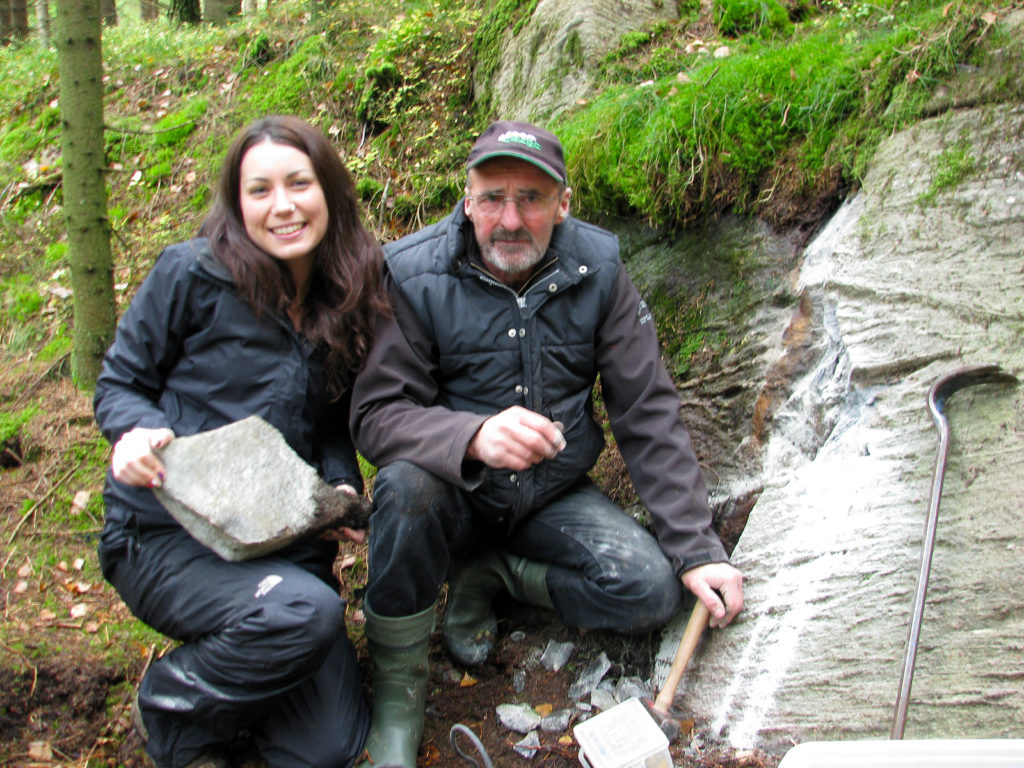
It is pretty bold to dare to sample strongly deformed eclogites; here we had to –desperately– ask a former quarry worker, Thore Malmgren, to blow the outcrop (you can see on my face that this has been a long and pretty epic process). Photo credit: C. Möller.
Doing fieldwork always has its good and bad days, especially when you’ve spent too much time swimming in swamps on your own. There is a consensus among the locals and accustomed geologists that I was pretty unlucky with the weather though. I thought I missed a chance to bring colleagues from the ecology department, sure to have discovered a new rainforest. Yet, there is no greater feeling than the one you get when you slowly peel back 10 cm of moss and discover a new eclogite outcrop (pictures below). You then realize that you are probably the first one that has seen them in ages, and quite likely to be the first one to make happy jumps in front of them.
The quietness of the colorful Swedish countryside, with lakes, trees, and typical red farms, is very pleasant on sunny days. Outcrops are sparsely distributed within the eclogite-bearing area, but often of decent size and relatively accessible in “normal” weather conditions. Regardless, the sight of gorgeous kyanite eclogites would largely compensate for any effort (pictures below). They typically contain partially preserved large kyanite crystals together with garnet and omphacite and even locally some purple corundum (ruby)!
We estimated that the eclogites in southern Sweden were buried at a pressure ~18kbar (that would roughly correspond to 60 km of depth), and temperatures of nearly 900 °C. They also record a partial exhumation through ~10 kbar at 850 °C. The pressure and temperature history recorded in the eclogites during their burial show a pretty “sudden” burial event before their exhumation. Because the rocks were not heated further during their travel from depth to near the surface either, we think that this journey – back and forth – was relatively quick. It is uncommon to be able to unravel both the burial and exhumation history of high-pressure rocks because processes get superimposed and tend to obscure rocks’ secrets even more. Besides, it is believed that quick mountain building processes are more common for recent orogens, and it is still unclear how and how differently these hotter mountains were formed 1 billion years ago. Eclogites in southern Sweden, therefore, helped in this perspective, by showing that the Sveconorwegian Orogen may not have been that different from the nowadays Himalayas.
If you are interested in reading more about our recent work on the Sweconorwegian eclogites:
Tual, L., Möller, C., Whitehouse, M., submitted. Tracking the prograde P–T path of Precambrian eclogite using Ti-in- quartz and Zr-in-rutile thermobarometry.
Möller, C. & Andersson, J., 2018. Metamorphic zoning and behaviour of an underthrusting continental plate. Journal of Metamorphic Geology.
Tual, L., Pitra, P. & Möller, C., 2017. P–T evolution of Precambrian eclogite in the Sveconorwegian orogen, SW Sweden. Journal of Metamorphic Geology.
Tual, L., Pinan-Llamas, A. & Möller, C., 2015. High-temperature deformation in the basal shear zone of an eclogite- bearing fold nappe, Sveconorwegian Orogen, Sweden. Precambrian Research, 265, 104-120
![]() This work is licensed under a Creative Commons Attribution-NonCommercial-ShareAlike 4.0 International License.
This work is licensed under a Creative Commons Attribution-NonCommercial-ShareAlike 4.0 International License.

